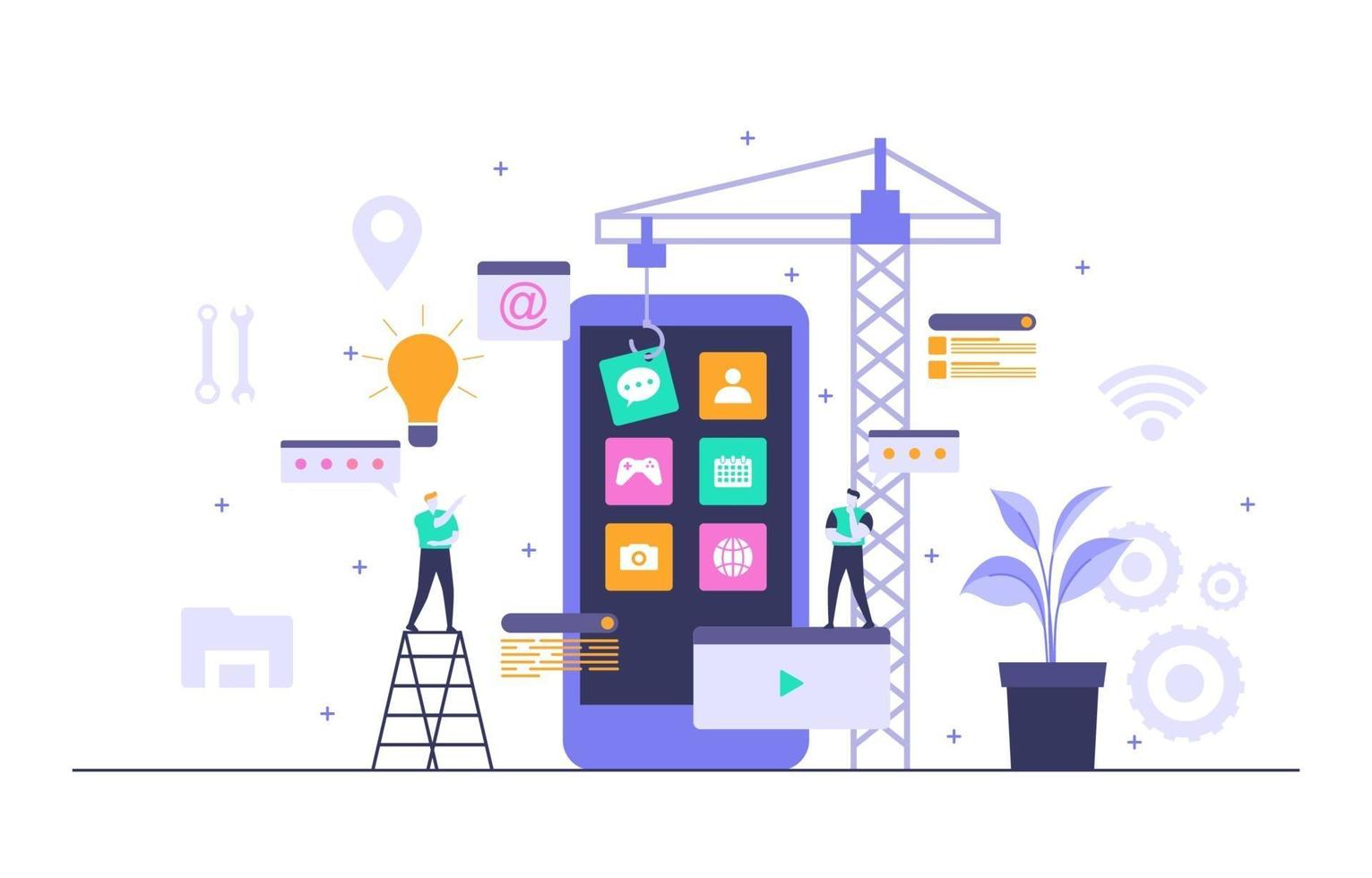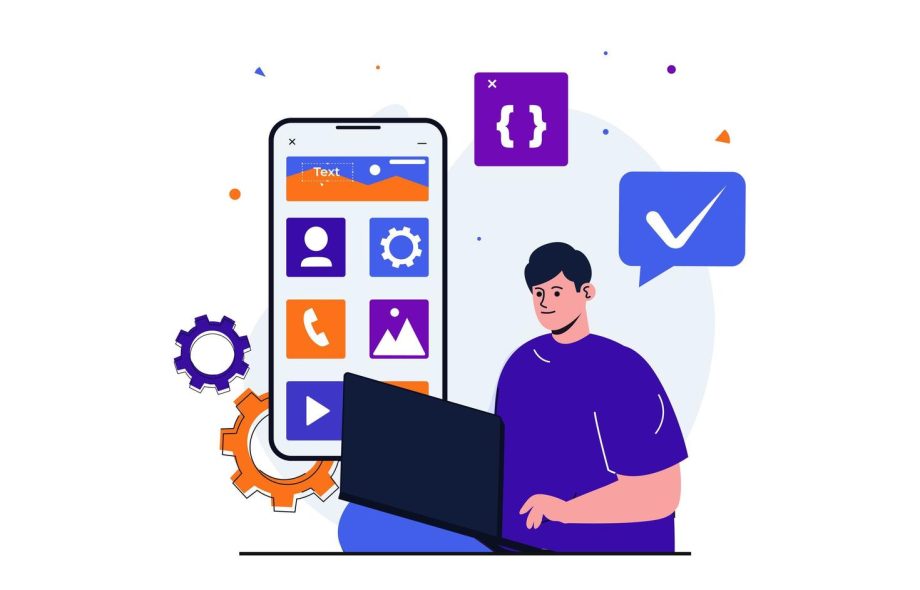In the digital age, ensuring that your mobile app is accessible to everyone, regardless of their abilities or disabilities, has become not only a best practice but a legal requirement in many regions, including Canada. Accessibility isn’t just about compliance with laws; it’s also about enhancing user experience, widening your audience, and providing inclusive solutions for all users. As a mobile app development company in Canada, understanding the importance of accessibility can set you apart from competitors and establish a more loyal user base.
In this article, we will explore the essential steps that Canadian mobile app developers should follow to make their applications accessible for all users. We’ll dive into best practices, legal requirements, and how integrating accessibility can improve your app’s overall performance and reputation.
1. Why Accessibility Matters in Mobile App Development

When you build a mobile app, your goal is to reach as many users as possible. However, people with disabilities often face barriers in using apps that aren’t designed with accessibility in mind. Accessibility features, such as voice commands, visual adjustments, and screen readers, help remove these barriers.
In Canada, accessibility is a legal issue as well. According to the Accessibility for Ontarians with Disabilities Act (AODA) and other similar regional regulations, businesses must ensure that digital content is accessible to people with disabilities. Failure to comply could result in legal consequences or losing a significant portion of potential users.
Benefits of Accessibility:
-
Wider Reach: By making your app accessible, you increase its potential user base, including people with visual, auditory, or motor impairments.
-
Better User Experience: Accessible design ensures that all users, including those without disabilities, can navigate your app with ease.
-
Compliance with Legal Standards: Following accessibility guidelines ensures you meet legal standards, avoiding penalties or lawsuits.
-
Improved Reputation: Accessibility reflects a company’s commitment to diversity and inclusion, which boosts reputation and brand loyalty.
2. Key Principles of Accessible Mobile App Development
When considering accessibility in mobile application development in Canada, several principles should guide your decisions. These principles are rooted in creating designs that can be used by as many people as possible, regardless of their physical abilities or technological limitations.
1. Perceivable Information
Users should be able to perceive the information presented in your app. This means providing text alternatives for images, ensuring that content is distinguishable by color, and using high contrast to assist users with visual impairments.
2. Operable Interface
Your app’s interface should be easy to navigate and operate, even for users with motor disabilities. Ensure that all interactive elements, such as buttons and links, are large enough to be easily tapped, and that the app can be fully operated with assistive technologies like voice commands.
3. Understandable Content
Content should be easy to read and understand. Use simple language, clear instructions, and avoid overly complex jargon. Additionally, it’s essential to provide feedback on actions so users know what’s happening within the app.
4. Robustness
Your app should be compatible with a variety of devices and platforms, including assistive technologies. This ensures that the app remains accessible as new technologies emerge, such as screen readers and voice recognition tools.
3. Integrating Accessibility into the Mobile App Development Process
The process of making your mobile app accessible doesn’t happen overnight. It requires careful planning and consistent attention to accessibility from the beginning of the project through to the final stages of development. Here’s how mobile app development services in Canada can integrate accessibility features at every step.
1. Start with Research
Before you begin the development process, research the specific needs of users with disabilities. Understand the most common barriers people face when using mobile apps, and identify tools like screen readers, braille displays, and speech-to-text systems that can help address these issues.
2. Follow WCAG Guidelines
The Web Content Accessibility Guidelines (WCAG) provide detailed instructions on how to make web and mobile content more accessible. These guidelines cover everything from text contrast to navigational cues, ensuring your app meets international standards for accessibility.
3. Use Accessible Design Tools
Utilize design tools and frameworks that support accessibility. Tools like Sketch, Figma, and Adobe XD have features that help designers build with accessibility in mind. These include color contrast analyzers, text-to-speech options, and more.
4. Test with Real Users
The best way to ensure your app is accessible is to test it with real users who have disabilities. Work with an accessible mobile app development company in Canada that conducts thorough user testing to ensure your app works across a range of accessibility needs, from screen readers to voice commands.
4. Best Practices for Creating Accessible Mobile Apps
1. Text Alternatives for Non-Text Content
Images, icons, and other media should have alternative text (alt text) so that users with visual impairments can understand the content. Alt text is read aloud by screen readers, providing context to the image.
2. Implement Voice Commands
Voice control is becoming increasingly important for users with motor disabilities. Mobile app developers in Canada should consider incorporating voice commands to enable users to navigate and interact with the app hands-free.
3. Color Contrast and Text Readability
Ensure that your app has sufficient color contrast for users with color blindness or low vision. Additionally, make text scalable so users with visual impairments can adjust font sizes to meet their needs.
4. Keyboard Accessibility
Ensure that all app functionality can be accessed via keyboard, without the need for a mouse. This is particularly helpful for users who rely on switch devices or other assistive technology to interact with their phones.
5. Provide Clear Navigation
Navigation should be straightforward, and buttons should be large enough to tap easily. Users with motor impairments may struggle to tap small or crowded buttons. Ensure that your navigation menus are simple, clear, and easily accessible.
5. Mobile Accessibility Testing: Tools and Techniques
Testing your app for accessibility is just as important as developing it. Fortunately, there are several tools available to ensure that your mobile app is accessible to all users.
1. Automated Testing Tools
Automated tools like Google Lighthouse, aXe, and WAVE can scan your app for accessibility issues such as insufficient color contrast, missing alt text, and more. These tools are a good starting point for identifying potential problems.
2. Manual Testing
While automated tools are useful, manual testing by real users is crucial. Work with individuals who have disabilities to test how the app functions in real-world scenarios.
3. Use of Emulators and Simulators
Emulators and simulators allow developers to simulate different disabilities, such as color blindness, to check how the app’s design will appear to different users.
4. Regular Audits
Make accessibility audits a regular part of your mobile app development process. Continually reassess your app to ensure that updates or changes don’t compromise its accessibility features.
6. Legal Requirements for Accessibility in Canada
As a top mobile app development company in Canada, it’s essential to be aware of the legal landscape surrounding digital accessibility. Canada has various provincial laws that require digital accessibility, especially in Ontario.
1. Accessibility for Ontarians with Disabilities Act (AODA)
This legislation mandates that public and private sector organizations in Ontario must make their websites and mobile apps accessible. It’s important to ensure your app complies with AODA guidelines to avoid legal risks.
2. Canadian Human Rights Act
This federal act ensures that individuals with disabilities are treated equally and have access to the same services and facilities as those without disabilities. If your mobile app doesn’t provide accessibility, you may be in violation of this act.
7. The Role of Devherds in Accessible Mobile App Development
When choosing a mobile app development company in Canada, look for a team that is committed to inclusivity and accessibility. Devherds, as a leading mobile app development company in Canada, understands the importance of building apps that everyone can use, regardless of their abilities.
Devherds employs best practices, follows legal guidelines, and uses state-of-the-art tools to ensure that every app they develop is accessible and user-friendly. Whether you need mobile app development services in Canada or a team of experts to consult on your next project, Devherds stands out as the best mobile app development company in Canada for accessible app design.
Conclusion
Making your mobile app accessible is not just about meeting legal standards—it’s about creating an inclusive, user-friendly experience for everyone. By incorporating accessibility features into your app from the start, you open your product up to a wider audience, increase user satisfaction, and foster trust in your brand.
If you’re ready to take the next step in mobile app accessibility, partner with a team of experts who understand the ins and outs of inclusive design. Devherds is here to guide you in building apps that are not only innovative but also accessible to all users in Canada.

